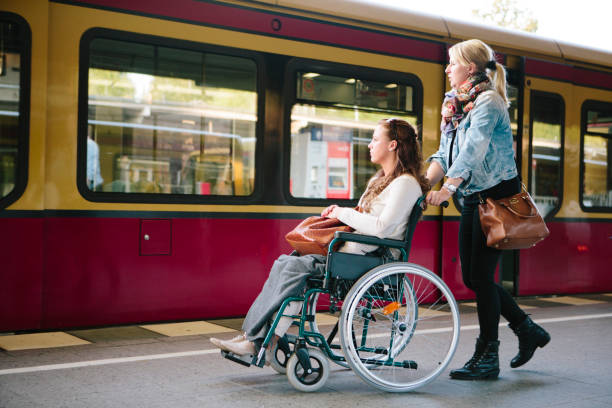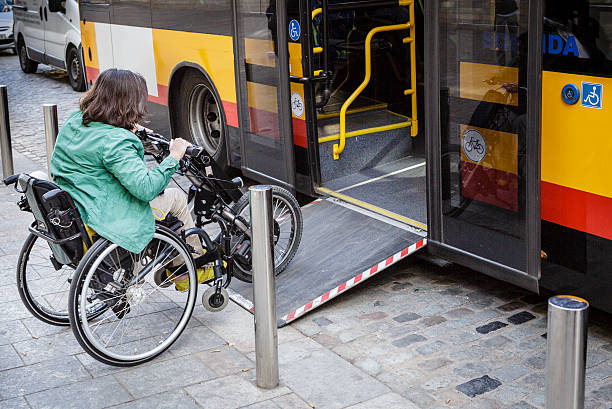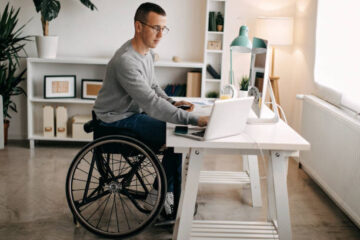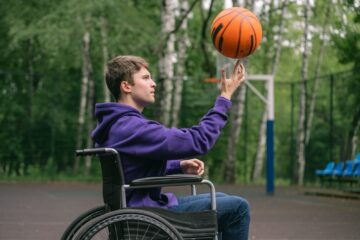To live independently, it is a must to learn to use public transport for people with disabilities. The freedom of movement is taken for granted by the physically abled. But, we know how much of a challenge it can be. That is why, we take great pride in specialising in and providing disability care.
You can start travelling with a support worker and learn valuable life skills and may become a more active member of the community.
Apply for a Public Transport Mobility Pass
People living with disabilities are eligible to apply for assistance when using public transport. They might be unable to validate their cards because of permanent physical disability, cognitive impairment, or any mental illness. You can apply for a Free Pass for yourself, or your assistance animal or carer.
Practice Your Trips With Your Carer
A few practice sessions with your family member or support worker can help ease your worries. Support workers can guide you to and from different places, such as your workplace, malls, etc. This service is available within most NDIS support services. Practising will help you build your confidence and become aware of all possible challenges.

Avoid Travelling During Peak Hours
It is important that people with disabilities use public transport for enjoying and accessing the activities in the community. However, travelling during rush hours when you are starting out, such as when everybody is commuting to and from the office, can make you uncomfortable. It can also make you self-conscious and increase your anxiety. Once you have mastered the routine, you can travel anytime you want.
Plan Your Trip
Knowing where you want to go and planning out the best route can help you with your worries. There are different services you can avail of, both public and private.
Metros and Trains
Fortunately, all Metropolitan Melbourne trains have wheelchair access and access ramps for people with disabilities to use public transport safely. They also provide tactile paths through the stations and platforms to street levels for the visually impaired. With the help of your support worker, you can learn how to navigate from the streets to the station. You can also learn to board trains as a part of your travel training.
V/Line trains and stations are also user-friendly for people with mobility issues. Train station staff and conductors can help you get your wheelchairs or scooters on board. They can place a ramp in between so you don’t have to worry about getting your devices on board. However, the staff don’t have the training to help you move, so your carer would be the one helping you move.

Accessible Trams and Buses
Fortunately, the Melbourne tram network is easy to navigate and use. To make movement easier, the network has:
- Level access tram stops (also known as accessible stops or platform stops)
- Low floor trams
- Priority seats are marked with a wheelchair symbol and usually covered in orange.
- Routes 5, 6, 8, 48, 16 and 72 are partly serviced by low-floor trams.
Your support worker can help you with the travel training to help you stay safe around public transport.
Buses
Both fully- and partly wheelchair-accessible routes are available for buses. You can use the bus schedule or contact the local bus conductors if you’re living in regional Victoria to find out the services best for you.
Driving and Parking Permits
People travelling with a disability can apply for a license and parking permit. The driver’s license requirements are the same for everyone but you must provide VicRoads with a medical report. The report would explain the extent of your disability and ensure there are no issues hindering your safety.
If you have gotten your license sorted, you can apply for a disability parking permit only through your local Victorian Council office. However, the permits are accepted across all Australian states and territories.
Reduce Sensory Anxiety
It is easy to get sensory overload when travelling around the city. Particularly more for those changing different modes of transport when travelling with a disability. There might be excess noise, visuals, or movements triggering your anxiety.
Your support worker will be there to help you develop your confidence and communication skills. Such as learning to talk to the public transport staff to voice out your concerns and ease your anxiety. Your carers can also teach you how to stay safe and protect yourself from unfortunate situations since safety can be a pressing issue, such as preventive defence or knowing how to keep your personal information safe.

Travelling on Public Transports for People with Disability | EaseCare
If you want to become a part of the community, you need to learn to travel on your own. EaseCare’s active support disability initiative trains support workers to successfully help people to learn to use public transport, and become confident to travel on their own.


